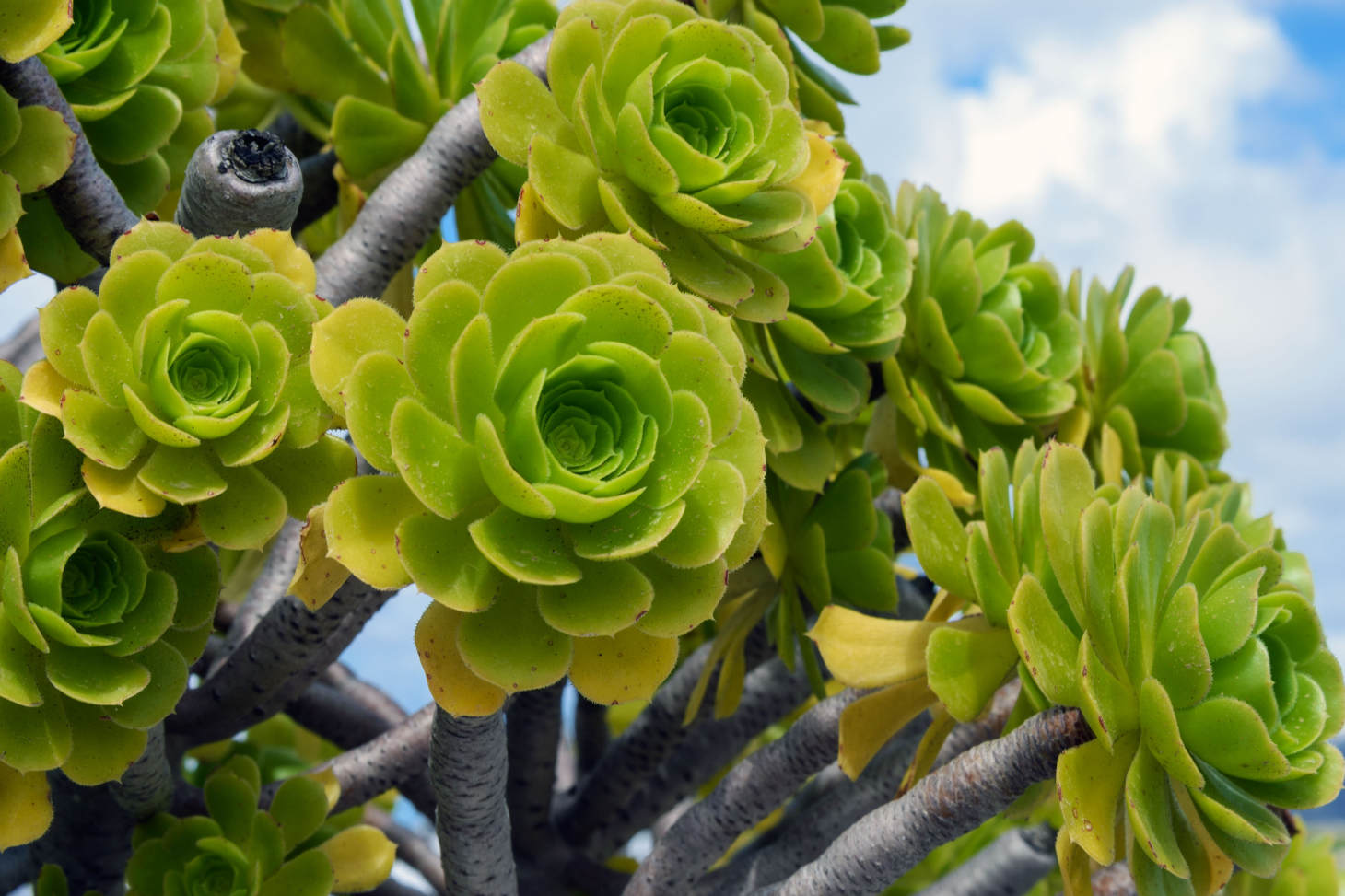Aeonium Compost: Optimal Soil Mix
Aeoniums are striking succulents that add a unique touch to any garden or indoor space. These plants, native to the Canary Islands, Madeira, and parts of Africa, have rosettes of waxy leaves that grow from a single stem. To grow healthy aeoniums, use a well-draining soil mix with added compost for extra nutrients.
When planting aeoniums, start with a container that has drainage holes. Mix regular potting soil with coarse sand or perlite to improve drainage. Add a handful of compost to boost fertility. This mix gives your aeoniums the nutrients they need while preventing water from sitting around the roots.
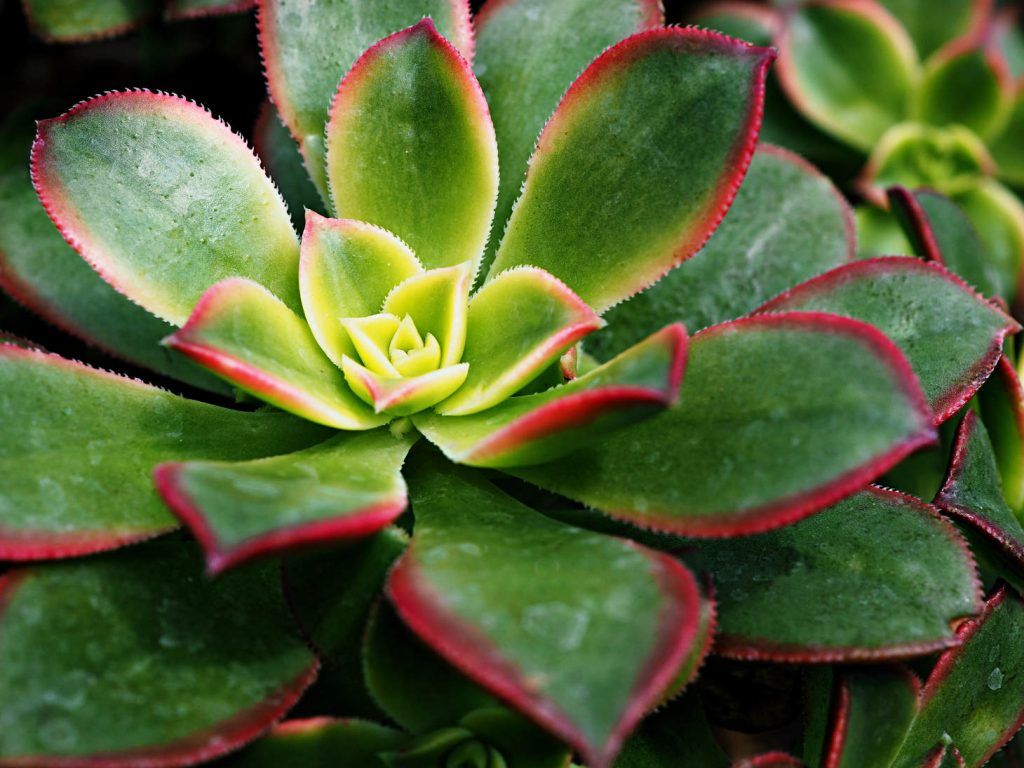
Water your aeoniums thoroughly in spring and fall, then let the soil dry out before watering again. This mimics their natural habitat and helps prevent root rot. Place your plants in a sunny spot outdoors or in a bright area inside. With the right soil mix and care, you’ll soon have thriving aeoniums with vibrant, eye-catching rosettes.
Choosing the Right Composting Materials for Aeoniums
Compost plays a key role in growing healthy aeoniums. The right mix provides nutrients and improves soil structure. Let’s explore the benefits of compost and how to pick the best types for your aeonium plants.
Benefits of Compost for Aeoniums
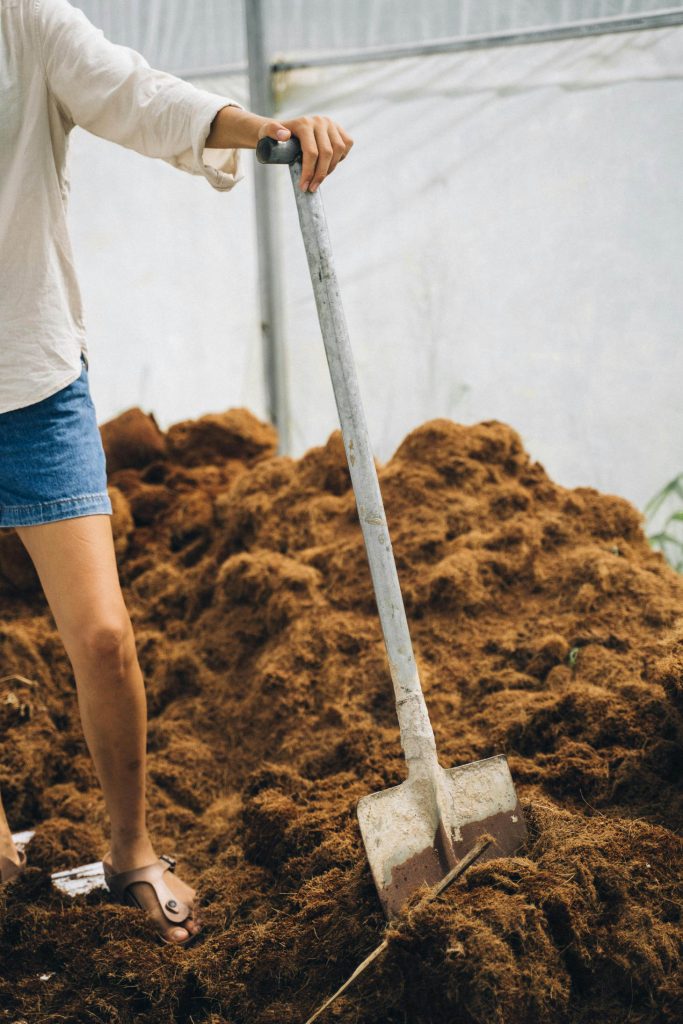
Compost boosts aeonium growth in several ways. It adds organic matter to the soil, which helps retain moisture without making it too wet. This balance is perfect for aeoniums, which need good drainage.
Compost also feeds your plants slowly over time. It’s full of nutrients that release gradually as the compost breaks down. This steady supply keeps your aeoniums healthy without the risk of overfeeding.
Another plus is improved soil structure. Compost makes soil lighter and airier. This lets aeonium roots grow easily and get the oxygen they need.
Lastly, compost supports helpful soil microbes. These tiny organisms keep the soil ecosystem healthy and can even fight off some plant diseases.
Selecting Appropriate Compost Types
When picking compost for aeoniums, look for well-draining options. A mix of different materials works best.
Start with a base of regular garden compost. Add some coarse sand or perlite to improve drainage. This stops water from pooling around the roots.
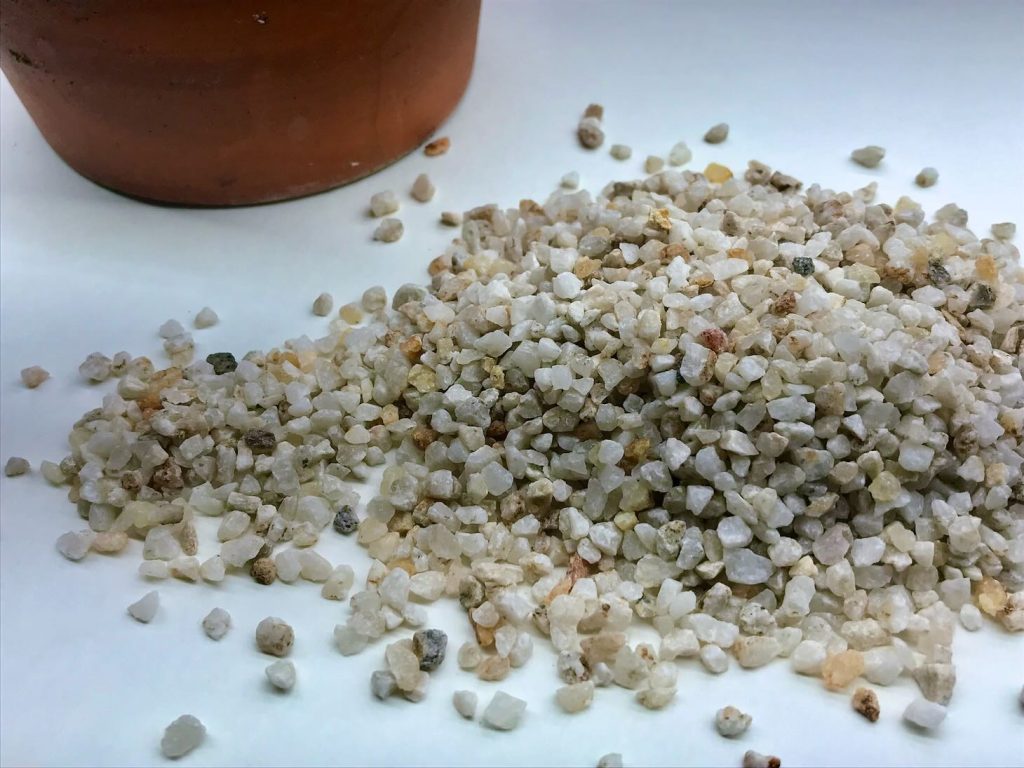
Worm compost, also called vermicompost, is great for aeoniums. It’s rich in nutrients and helps soil hold water without getting soggy.
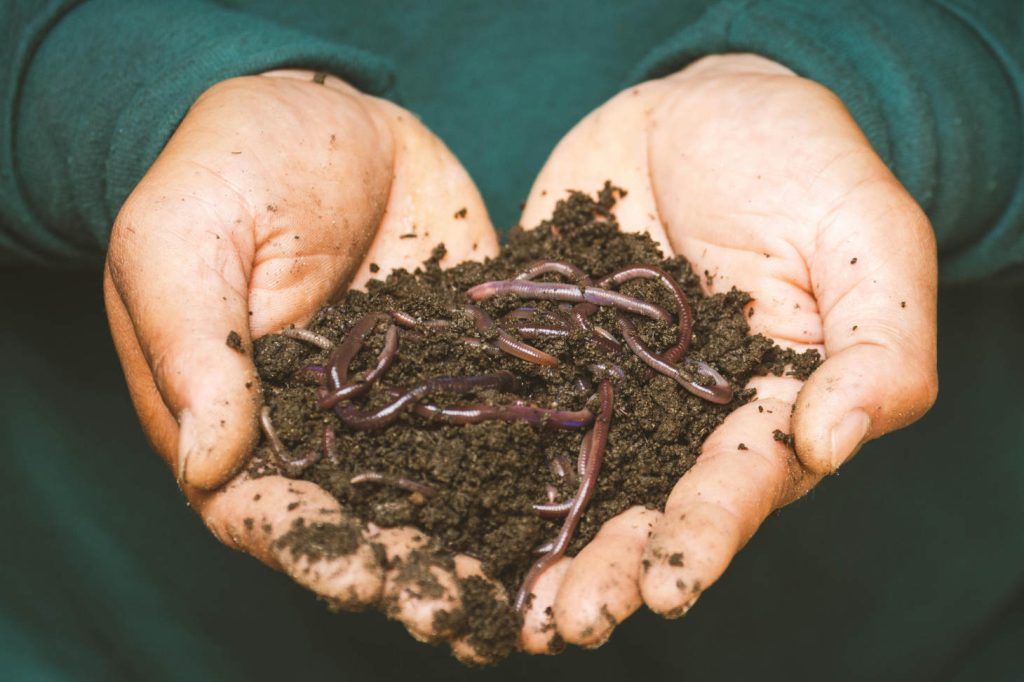
You can also use coconut coir in your mix. It’s a sustainable choice that holds water well but still drains quickly.
Avoid composts that are too heavy or hold too much water. Pure peat moss, for example, can be too wet for aeoniums.
Mix your chosen materials in roughly equal parts. This creates a balanced soil that aeoniums love. Remember to adjust based on your local climate and how often you water.
Fundamentals of Soil Mix and Composition
Aeoniums need the right soil mix to thrive. A good mix helps roots grow strong and keeps plants healthy. Let’s look at how to make the best soil for your aeoniums.
Creating the Optimal Soil Mix
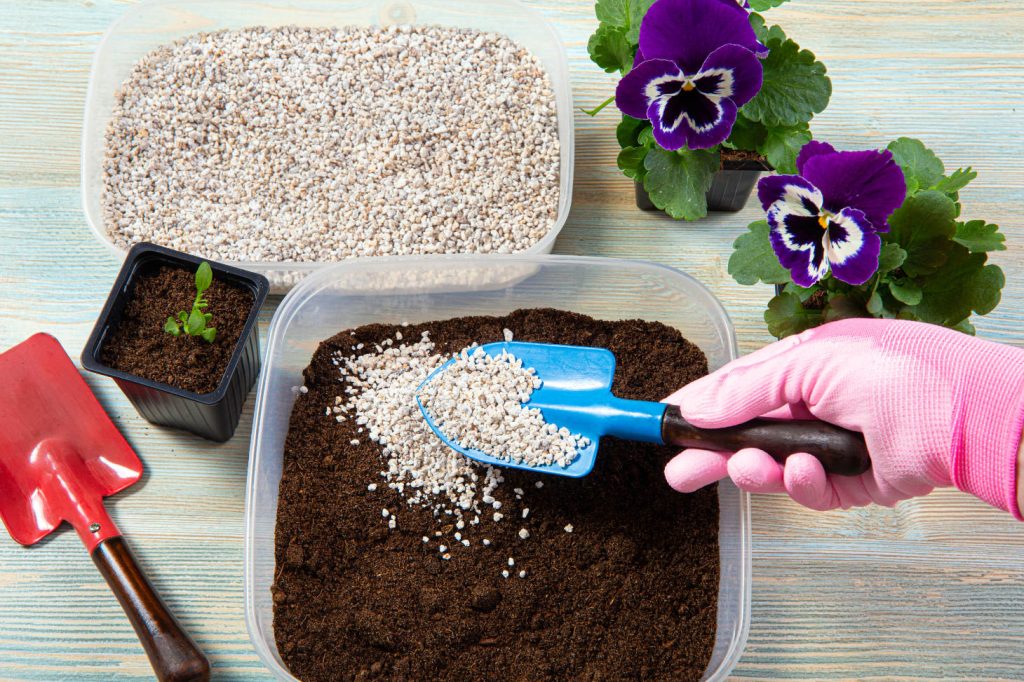
Start with a base of potting soil. Add coarse sand to improve drainage. Mix in perlite or pumice to create air pockets. A good ratio is 50% potting soil, 25% coarse sand, and 25% perlite.
You can also add some peat moss. It helps hold water without making the soil too wet. Use about 10% peat moss in your mix. Or better yet, stick to coco coir for easier watering.
For extra nutrients, put in a small amount of compost. When planting in pots, mix a handful of compost into your potting mix. Avoid using excessive amounts of compost or fertilizers, as this can lead to problems like root rot.
Test your mix by watering it. The water should drain quickly. If it doesn’t, add more coarse sand or perlite.
Mixing your own Aeonium soil can be tricky and expensive. Sourcing ingredients, getting the ratios right, and avoiding problems like root rot is a challenge.
Our succulent soil eliminates the guesswork. It’s perfectly blended for drainage, aeration, and nutrients, giving your Aeonium the ideal growing medium. Skip the DIY hassle and give your Aeonium the best. Try our soil today!
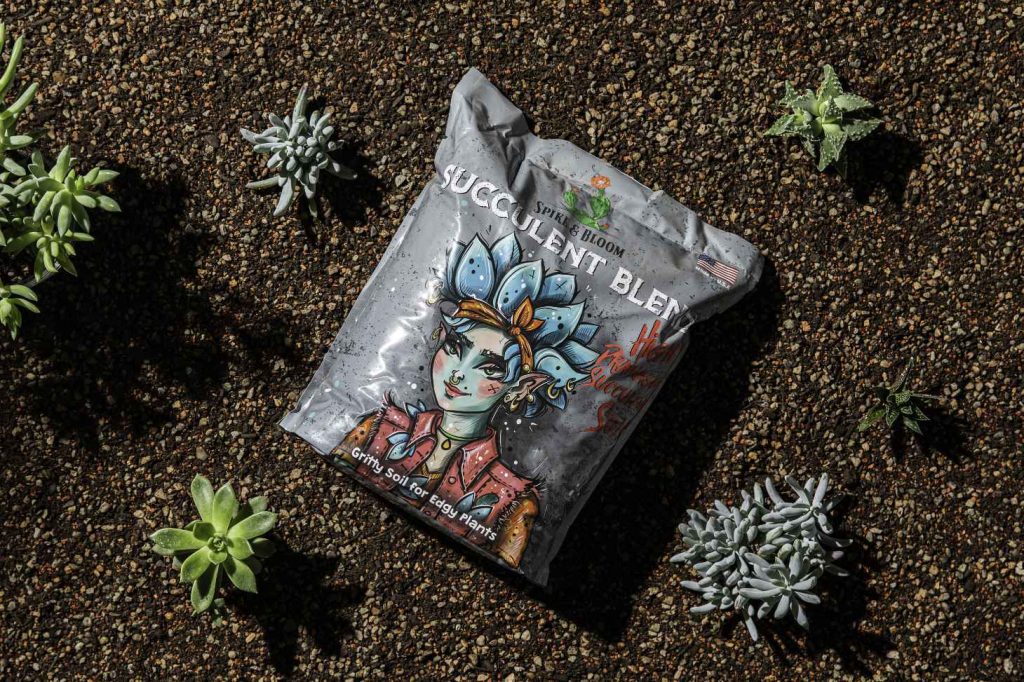
Balancing Soil PH and Aeration
Aeoniums like soil with a pH between 6.0 and 6.5. You can buy a soil pH tester at garden stores. If your soil is too acidic, add some lime. If it’s too alkaline, add sulfur.
Good aeration is key for aeonium roots. They need oxygen to stay healthy. Loamy soil works well because it has space for air. Sandy loam is even better.
To improve aeration:
- Avoid packing soil too tightly
- Use chunky materials like bark chips
- Don’t overwater
Check your soil often. If it feels hard or compacted, it’s time to add more airy materials. Your aeoniums will thank you with better growth and brighter colors.
Watering and Fertilizing Practices
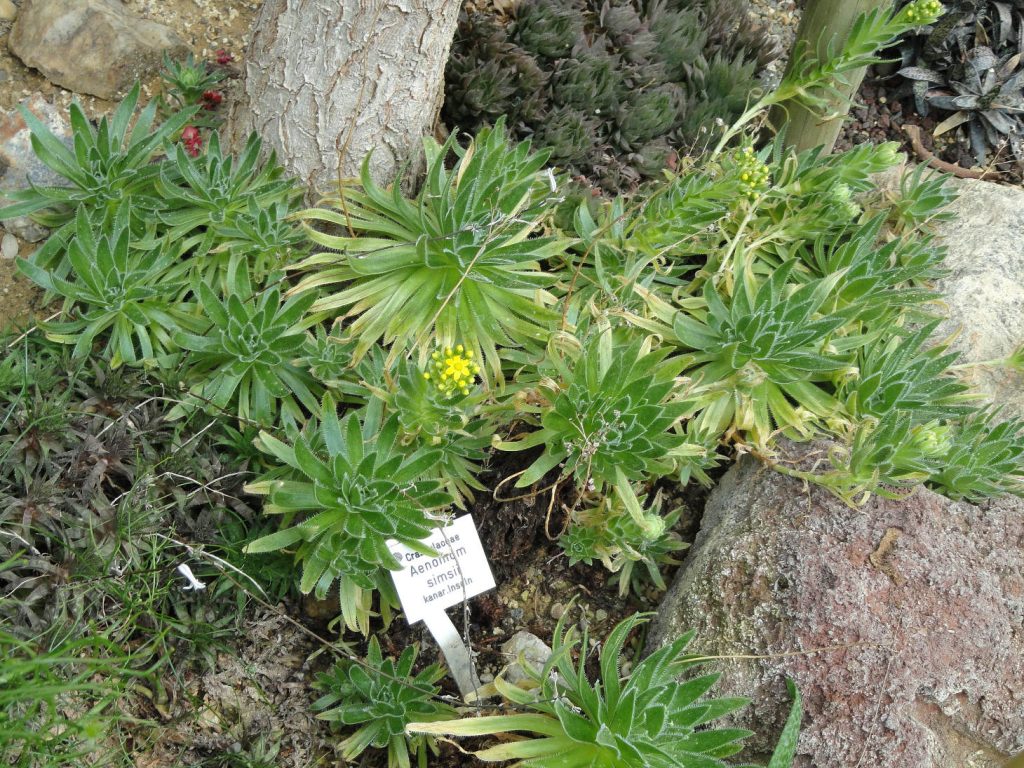
Proper watering and fertilizing are key to keeping your aeoniums healthy. These practices help your plants grow strong and look their best.
Guidelines for Watering Aeoniums
Water your aeoniums when the top inch of soil feels dry. These plants don’t like wet feet, so let the soil dry out between waterings. In spring and fall, water more often. Cut back on watering in summer when aeoniums are dormant.
Use a pot with drainage holes. This lets extra water flow out and stops root rot. When you water, aim for the base of the plant. Try not to get water on the leaves.
Rainwater is great for aeoniums. If you can, collect it in a container with a lid. Rainwater has the right mix of minerals that aeoniums love.
Effective Fertilizing Techniques
Feed your aeoniums during their growing season, which is spring through fall. Use a low-strength, balanced fertilizer made for succulents. Apply it once a month when you water.
Don’t fertilize in summer. This is when aeoniums rest and don’t need extra food. Start feeding again in early fall when growth picks up.
Compost is a good choice for aeoniums. Mix some into your succulent potting mix before planting. You can also top-dress with a thin layer of compost once a year in spring.
When you fertilize, do it in the early morning or late afternoon. This helps avoid leaf burn. After feeding, water lightly to help the plant soak up the nutrients.
Optimizing Growth Conditions
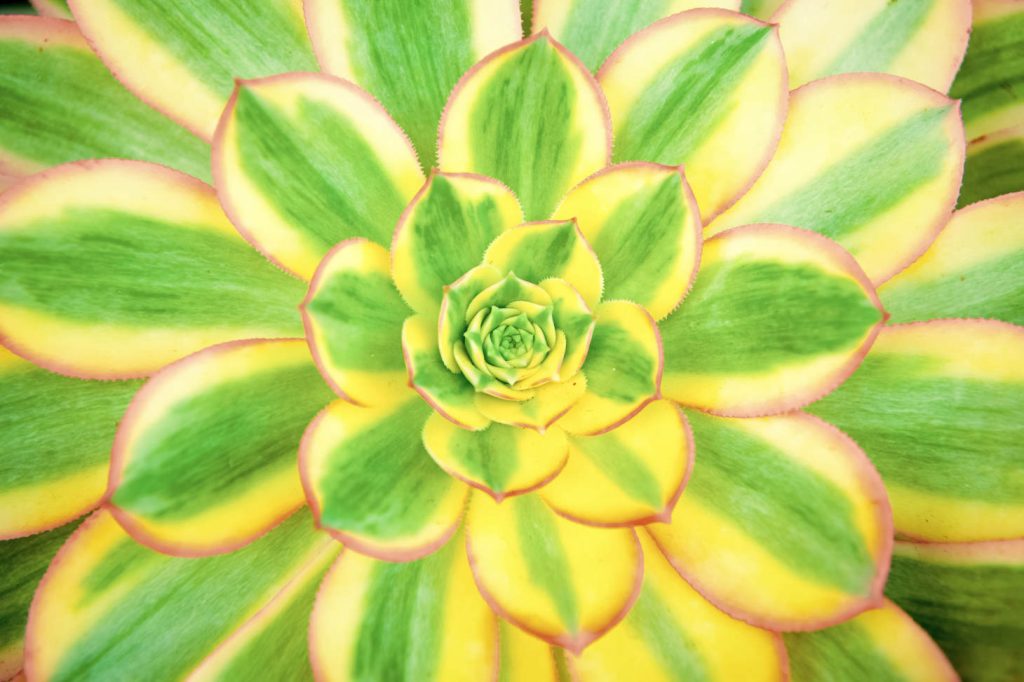
Aeoniums thrive in specific conditions that mimic their native habitats. The right temperature, humidity, and lighting are key to healthy growth.
Temperature and Humidity Control
Aeoniums prefer moderate temperatures. They do best in areas with daytime temps between 65-75°F (18-24°C). At night, they can handle drops to 50°F (10°C).
These plants come from Mediterranean climates. They prefer dry air but benefit from a relative humidity of 40-60% for optimal growth and flowering. Too much moisture can lead to rot.
In winter, protect your aeoniums from frost. Most varieties can survive brief dips to 25-30°F (-4 to -1°C), but prolonged exposure to freezing temperatures can lead to frost damage. If you live in a colder area, bring them inside when temps drop below freezing.
Aeoniums are suited for USDA hardiness zones 9-11. In cooler zones, grow them in pots so you can move them indoors for winter.
Adequate Lighting for Healthy Growth
Bright light is crucial for aeoniums. They need at least 6 hours of direct sun daily. Without enough light, they may grow leggy or lose their vibrant colors.
Place your aeoniums in a spot that gets morning sun and some afternoon shade. This protects them from intense midday heat.
If growing indoors, put them near a south-facing window. You can also use grow lights to give them the brightness they need.
Too little light causes weak growth. Too much can scorch the leaves. Watch your plants and adjust their position as needed for the best results.
Propagation and Repotting
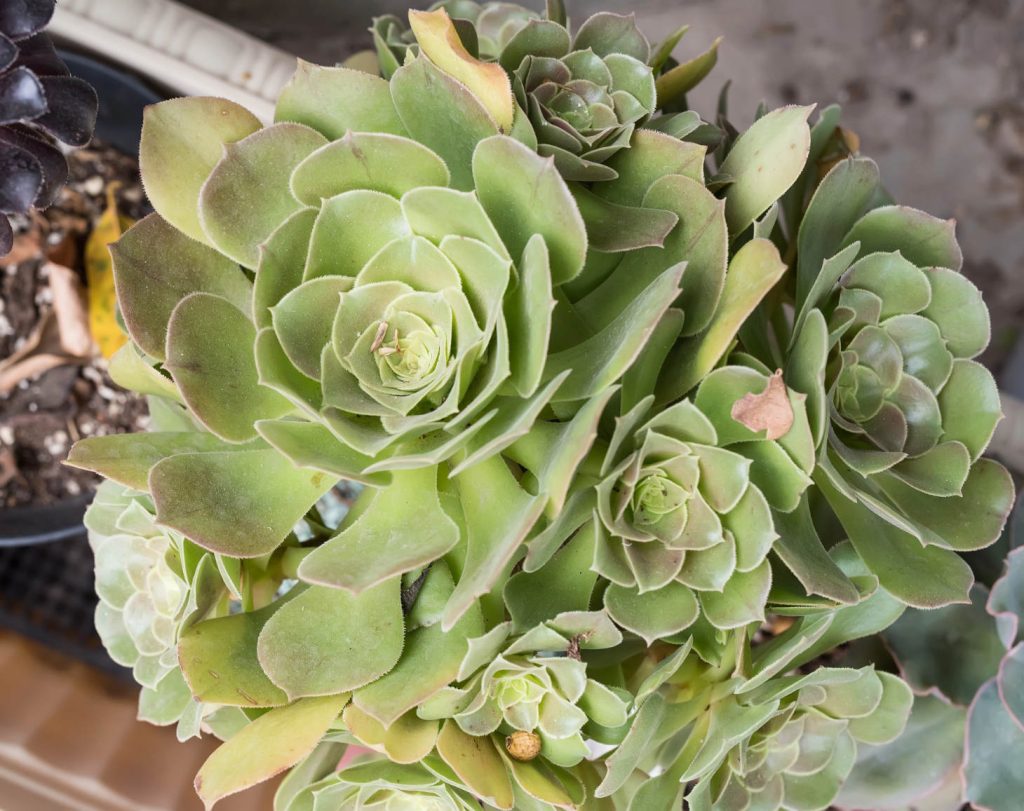
Growing aeoniums involves two key processes: propagation to create new plants and repotting to maintain healthy growth. These techniques are essential for expanding your collection and keeping your aeoniums thriving.
Techniques for Propagating Aeoniums
Aeoniums are easy to propagate using stem cuttings. Cut a healthy stem about 4 inches long with sharp, clean scissors. Remove the lower leaves, leaving a few at the top. Let the cutting dry for 2-3 days to form a callus.
Plant the callused cutting in a well-draining mix of cactus soil and perlite. Water lightly and place in bright, indirect light. Roots will form in 2-3 weeks.
You can also propagate from offsets. Gently separate these small plants from the mother plant, ensuring each has some roots attached. Plant them in small pots with the same soil mix.
Best Practices for Repotting
Repot your aeoniums every 2-3 years or when they outgrow their current pot. Choose a container 1-2 inches larger with good drainage holes. Spring is the best time to repot.
Use a well-draining mix that includes potting soil, perlite, and coarse sand. This ensures good drainage. Add a thin layer of gravel at the bottom of the pot for extra drainage.
Gently remove the plant from its old pot. Shake off excess soil and check for any unhealthy roots. Trim these if needed. Place the aeonium in its new pot at the same depth as before.
Fill around the roots with fresh soil mix. Do not water aeoniums immediately after repotting. Instead, wait about a week to allow the plant to adjust. Place them in a spot with bright, indirect light. Avoid fertilizing for a month to let the plant adjust to its new home.
Preventing and Managing Common Pests and Diseases
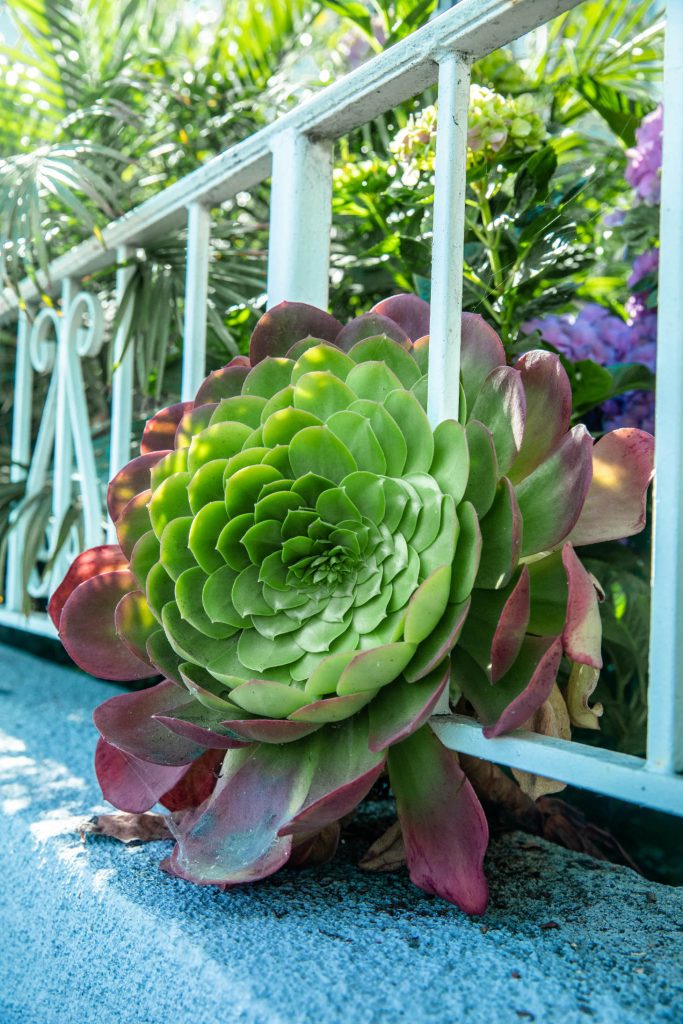
Keeping your aeoniums healthy means watching for signs of trouble and taking quick action. You can protect your plants by knowing what to look for and how to respond.
Identifying Signs of Pests and Diseases
Look closely at your aeoniums often. Check the leaves, stems, and soil for any odd changes. Spots, discoloration, or wilting can mean disease. White fuzzy spots might be mealybugs. Tiny webs could be spider mites.
Drooping or yellowing leaves can point to root rot. This happens when soil stays too wet. Sticky leaves may mean aphids are around. If you see ants, look closer. They often show up with other pests.
Act fast if you spot these signs. Quick action can save your plants.
Treatment and Prevention Strategies
To keep pests away, use these tips:
- Water only when the soil is dry
- Give plants good air flow
- Use clean tools when working with plants
- Remove dead leaves and debris
If you find pests:
- Wipe leaves with rubbing alcohol for mealybugs
- Spray plants with water to knock off spider mites
- Use insecticidal soap for most bugs
For diseases:
- Cut off infected parts with clean tools
- Treat root rot by letting soil dry and repotting
- Use fungicides for fungal issues
Stop problems before they start. Use well-draining soil and pots with holes. Don’t overwater. Keep your plants in bright, indirect light. Healthy plants fight off pests and diseases better.
Aeoniums in Different Climates
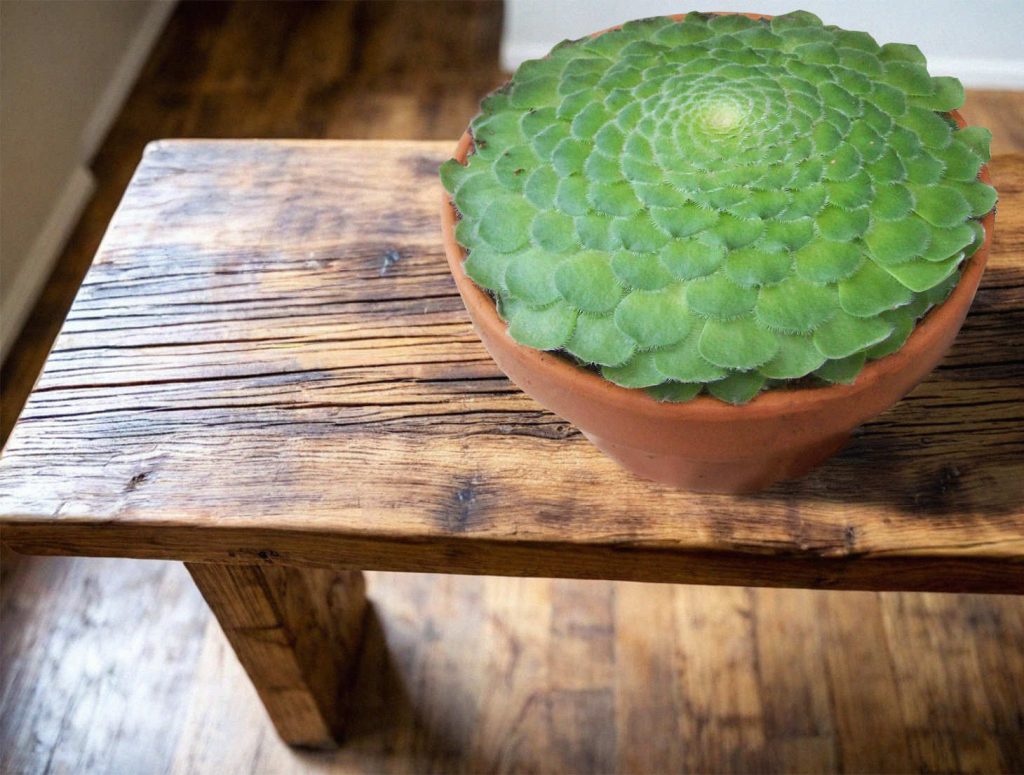
Aeoniums can thrive in various climates, but they need specific care based on their environment. The key is understanding how to adjust watering, soil, and sun exposure.
Caring for Aeoniums in Arid Regions
In dry areas like the Arizona desert, aeoniums need extra care. Water them less often, allowing the soil to dry out completely between waterings. Use a pot with drainage holes to prevent root rot.
Shield them from intense afternoon sun. A spot with morning sun and afternoon shade works best. Add some perlite to your soil mix for better drainage.
In summer, aeoniums may go dormant. Cut back on watering during this time. Watch for signs of sunburn on the leaves and move the plants if needed.
Growing Aeoniums in Coastal Areas
Coastal regions like Santa Barbara are ideal for aeoniums. The climate is similar to their native Canary Islands. You can plant them in the ground or in pots.
In these areas, aeoniums need less water. Once a week is often enough. Use a sandy, well-draining soil mix.
Aeonium arboreum ‘Atropurpureum’ does well in full sun near the coast. Its purple leaves get darker with more sun. In foggy areas, give your aeoniums more sun to prevent stretching.
Protect your plants from frost in winter. Move potted aeoniums indoors or cover ground plants if temperatures drop below freezing.
Understanding Aeonium Varieties
Aeoniums come in many shapes and sizes. You’ll find small compact rosettes and large tree-like plants. Some have bright colors while others stay green.
Characteristics of Popular Varieties
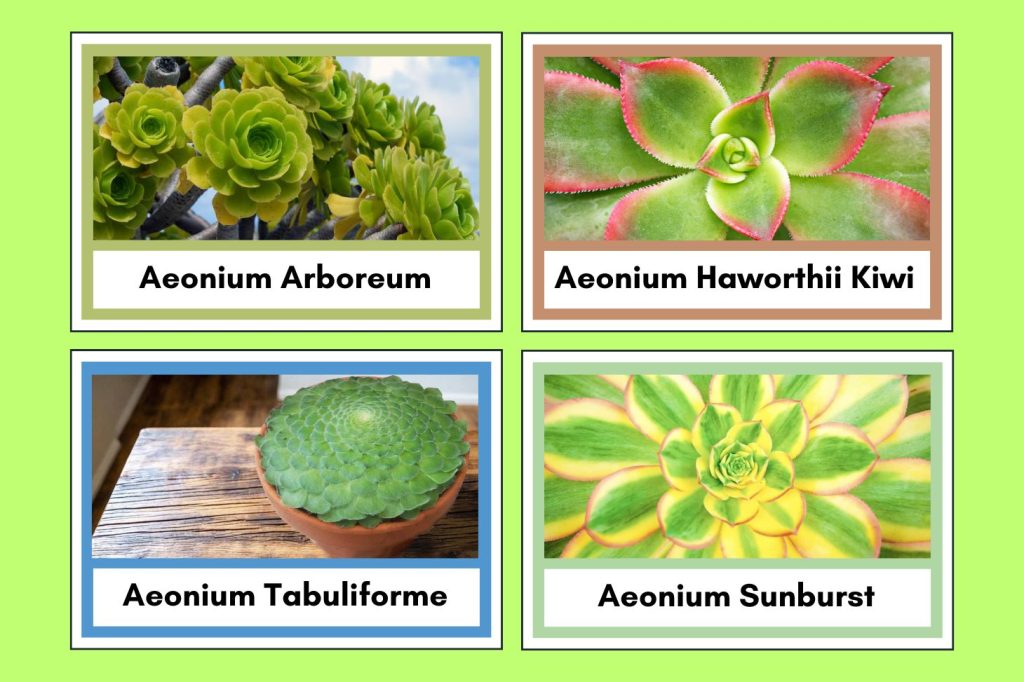
Aeonium arboreum, also called tree aeonium, can grow up to 6 feet tall. It has large green rosettes at the ends of woody stems. Aeonium ‘Kiwi’ typically grows up to 18 inches tall and features variegated leaves with a blend of green, yellow, and pink colors. Aeonium tabuliforme forms a flat rosette that looks like a plate. It grows to a height of 2-6 inches (5-15 cm) and can spread to 18 inches wide.
Aeonium Sunburst has creamy yellow and green striped leaves with coppery red tips. Its rosettes can reach 8 inches across. The ‘Zwartkop’ variety has dark purple, almost black leaves. This striking plant can grow up to 3 feet tall.
Monocarpic versus Perennial Aeoniums
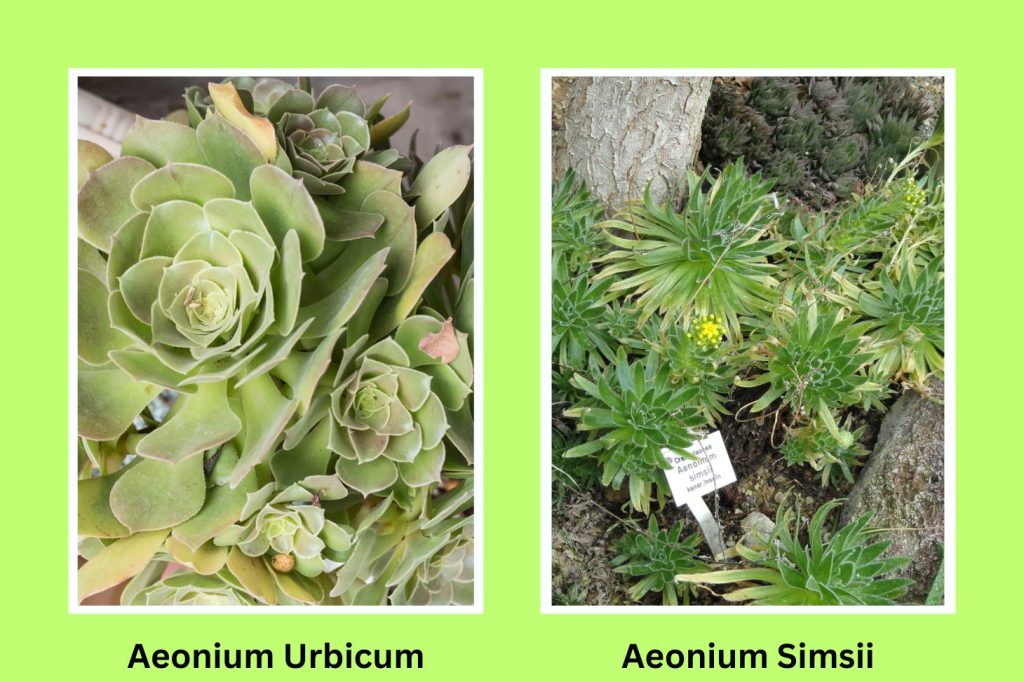
Most aeoniums are perennial plants that live for many years. They grow, bloom, and keep on living. But some aeoniums are monocarpic. This means they die after flowering.
Aeonium urbicum and Aeonium simsii are examples of monocarpic types. They put all their energy into one big bloom before dying. Perennial aeoniums like Aeonium arboreum and Aeonium haworthii can flower many times. They keep growing new rosettes year after year.
You can tell monocarpic aeoniums apart by their single large rosette. Perennial types often branch out with multiple rosettes.

